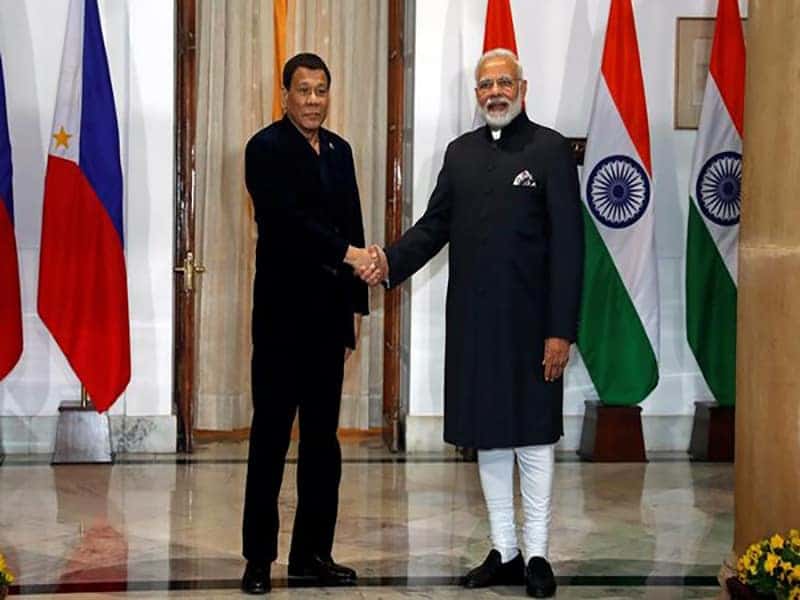Singapore: With the Philippines economy growing at a fast rate, Indian businesses can capitalise on potential opportunities to grow trade relations between the two countries.
The Philippines’ economy clocked a growth rate of 6.2 per cent in the third quarter (July to September) of the current financial year. During Q1 (January to March) and Q2 (April to June), the gross domestic product (GDP) had expanded at 5.2 and 5.5 per cent respectively.
It is the first time that the GDP growth rate has been between 6 to 7 per cent — the target set by Philippines President Rodrigo Duterte.
The government was quick to pounce on the good news to declare that the results demonstrated the Duterte administration’s economic prowess.
Presidential spokesman Salvador Panelo said in a statement that while it is public knowledge that the hallmark of this Administration is its unmatched advocacy for peace and order, this development illustrates its competence in other fields, such as protecting the health of the nation’s economy notwithstanding inevitable setbacks it has encountered in the past.
He further added, “based on reports, this GDP puts the Philippines ahead of India, Indonesia, and even China.”
The Philippine Statistic Authority reported that sectors that led the growth for the quarter were trade and repair of motor vehicles, motorcycles, personal and household goods; construction; and financial intermediation. The services sector posted the fastest growth with 6.9 per cent; followed by industry with 5.6 per cent; and agriculture, hunting, forestry, and fishing with 3.1 per cent.
Economists believe that trade between India and the Philippines has much room to develop. With the Philippines economy being one of the fastest-growing economies in the world, India can aim to play a bigger role and seize available opportunities that play to its strength.
India currently ranks 15th among Philippines trading partners globally with bilateral trade valued at USD2.32 billion. India currently exports USD1.74 billion versus importing USD581 million worth of goods from the Philippines. Total trade has grown over 2.2 times in ten years. In 2009, bilateral trade was valued at USD1.06 billion. Based on India’s Department of Commerce data, the Philippines does not feature among the top 50 countries that India trades with. This is not surprising as India has a far larger economy.
In his visit to the Philippines last month, where President Kovind met with Philippine President Duterte, four agreements covering maritime domain security, tourism, science and technology and culture were signed. The visit also coincided with the occasion of the 70th anniversary of diplomatic relations between the two countries. In addition, President Kovind attended business and community events like the India-Philippines Business Conclave and the 4th ASEAN-India Business Summit.
Although India implemented the “Look East” policy in the 1990s, trade cooperation with the Philippines was largely overlooked in favour of its Southeast Asian neighbours like Vietnam and Singapore. Only with the introduction of the “Act East” policy in 2014 did links with countries like the Philippines start to develop significantly.
The main products that India exports to the Philippines are vehicles, and parts and accessories, pharmaceuticals, agricultural products, nuclear reactors parts, metals, and mineral oils and fuels. Whereas, the main products that India buys from the Philippines include machinery and mechanical appliances, electrical machinery and equipment, visual and audio equipment, cultured pearls and precious stones, jewellery, metals and chemicals. Going forward, there is potential for Indian businesses to invest in such sectors as IT and software, engineering, infrastructure construction, power and transportation, agribusiness, medical, tourism, financial and legal services.
The potential for Philippines-India economic collaboration was highlighted by President Kovind where he pointed out that both countries share mutual complementarities which can be used to deepen trade and investment ties. He said that India’s “Make in India” and next-generation infrastructure programmes and the Philippines “Build, Build, Build” infrastructure initiative present immense opportunities for companies and investors on both sides.
He further opined that the existing full potential has not been realised yet even though there has been positive growth in trade between the two countries after the signing of the Agreement on Trade and Goods in 2009 between ASEAN and India which was implemented in 2011. He added, “there is a need to further facilitate trade between the two countries. Even though ASEAN-India trade has jumped significantly in the last few years, there is still a long distance to be covered in order to reach the target of USD200 billion by 2022.”
Given that India has decided to opt-out of the RCEP (Regional Comprehensive Economic Partnership), at least in its current iteration, bilateral trade agreements between India and individual countries or friendly regional groupings which address India’s interests need to be ramped up to help India to meet its economic goals. Cooperation with the Philippines is certainly a step in the right direction.

